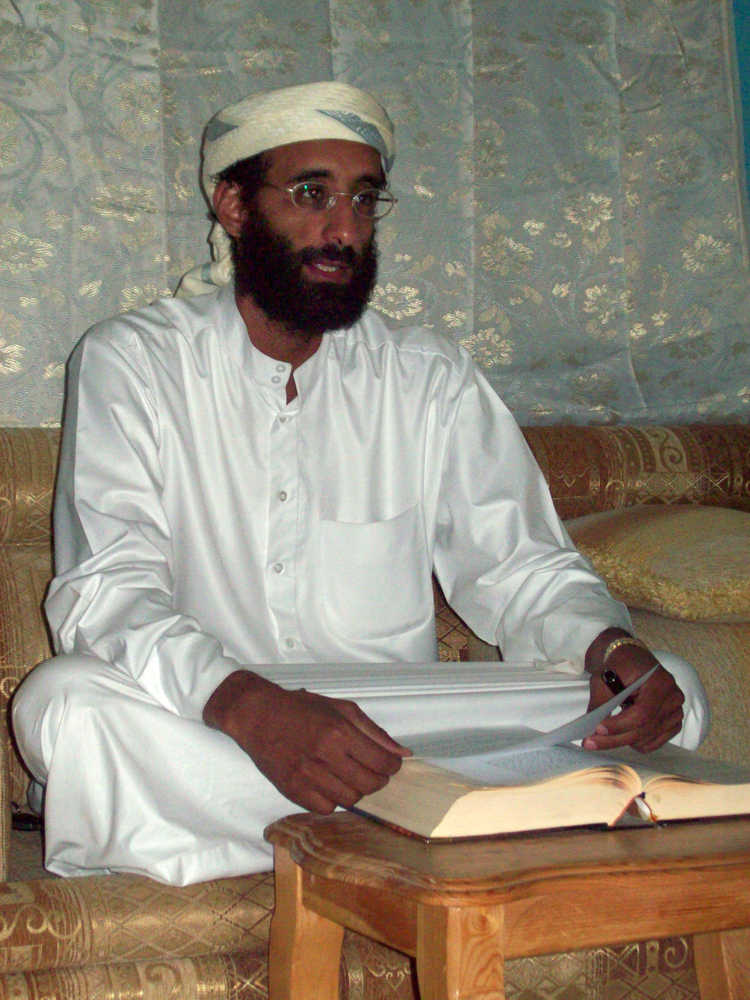NEW YORK — The secret U.S. government memo outlining the justification for the use of drones to kill American terror suspects abroad was released by court order Monday, yielding the most detailed, inside look yet at the legal underpinnings of the Obama administration’s program of “targeted killings.”
The 41-page memo — whose contents had previously been summarized and released piecemeal — was heavily redacted for national security reasons, with several entire pages and other passages whited out.
But it argues among other things that a targeted killing of a U.S. citizen is permissible under a 2001 law passed by Congress soon after 9/11. That law empowered the president to use force against organizations that planned and committed the attacks.
“The release of the memo will allow the public to better assess the lawfulness of the government’s targeted killing policy and the implications of that policy,” said Jameel Jaffer, an American Civil Liberties Union attorney who argued for release of the memo. “Despite the release of this memo, the public still knows scandalously little about who the government is killing and why.”
He said the memo contains the first formal acknowledgment by the government that the CIA is involved in the program.
The July 2010 memo was written by a Justice Department official who is now a federal appeals court judge. It was released after a yearlong legal battle by The New York Times and the ACLU.
The memo specifically provided the legal justification for the September 2011 killing in Yemen of Anwar Al-Awlaki, an al-Qaida leader and one-time cleric at a Virginia mosque who had been born in the United States, and another U.S. citizen, Samir Khan, who edited al-Qaida’s Internet magazine. An October 2011 strike also killed Abdulrahman al-Awlaki, al-Awlaki’s teenage son and also a U.S. citizen.
Al-Awlaki had been involved in an abortive attack against the U.S. and was planning other attacks from his base in Yemen, the memo said. It said the authority to use lethal force abroad may apply in certain circumstances to a U.S. citizen who is part of the forces of an enemy organization.
The memo said the Defense Department operation was being carried out against someone who was within the core of individuals against whom Congress had authorized the use of “necessary and appropriate” force. David E. McCraw, vice president and assistant general counsel for the Times, called the memo “a critical addition to the public debate over targeted killings and should fuel a richer discussion of the legal and security issues that are at the heart of that debate.”
The memo was written by David Barron, who at the time was acting chief of the Justice Department’s Office of Legal Counsel. He was recently confirmed as a judge in the 1st U.S. Circuit Court of Appeals in Boston.
U.S. officials considered al-Awlaki to be an inspirational leader of al-Qaida, and they have linked him to the planning and execution of several attacks targeting American and Western interests, including a 2009 attempt on Christmas Day to blow up a Detroit-bound airliner.
Pardiss Kebriaei, a senior attorney with the Center for Constitutional Rights, said the memo’s contents showed that the targeted killing program was built on “gross distortions of law.”
Kebriaei, who worked with the ACLU on two lawsuits challenging al-Awlaki’s killing, estimated that more than 4,000 people may have been killed by drone strikes since 2009. The lawyer said that although the U.S., England and Israel are the only countries that have used drones to kill, other countries soon will have such aircraft of their own.
“The United States loosening and redefining international rules governing the use of force and war is ultimately not going to make anyone any safer,” the lawyer said.
Meanwhile, the 2nd Circuit indicated that the memo’s release might not be the last. The appeals court also ordered the Justice Department to show other legal opinions to a lower-court judge to determine whether they, too, must be disclosed.
In February 2013, the administration released a 16-page Justice Department “white paper” summarizing the legal arguments detailed in the memo released Monday. The paper asserted that it would be legal to kill a U.S. citizen who had joined al-Qaida if “an informed, high-level official” concluded that the person could not be captured and posed “an imminent threat of violent attack against the United States.”
The paper said an imminent threat “does not require … clear evidence that a specific attack on U.S. persons and interests will take place in the immediate future.”
A Yemeni human rights activist, Abdel-Rahman Barman, said the memo shows that any security tip that reaches the U.S. government could lead to somebody being killed.
“This will only endanger the lives of more people,” Barman said.

